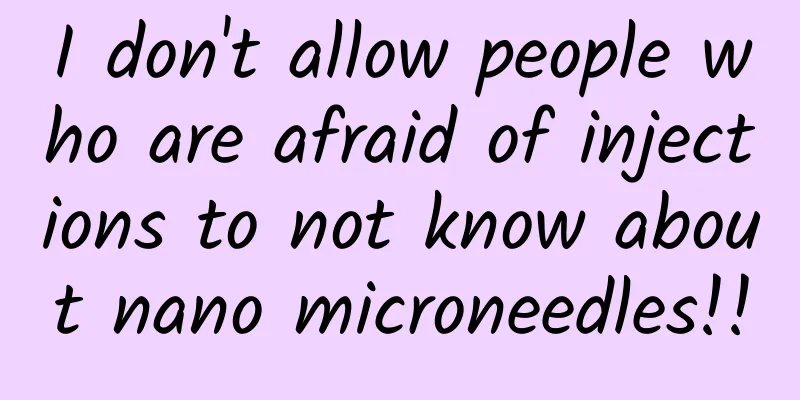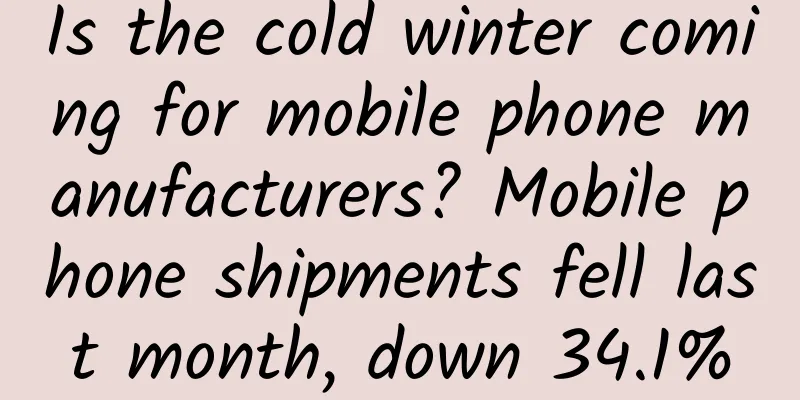I don't allow people who are afraid of injections to not know about nano microneedles!!

|
The same world, the same kind of "needle phobia" patients. In the eyes of normal people, needles look like this: In the eyes of people who are afraid of injections, needles look like this: The silly scenes about people being afraid of injections that are circulating online can make people laugh all day long... I run~ It hurts so much~ So, did you have any trauma from the vaccinations you received as a child? Or did you witness any silly scenes when you were getting the COVID-19 vaccine? In recent years, a new drug delivery technology has been developed. Perhaps one day in the future we will no longer see those famous injection scenes! 01 New drug delivery technologies emerge In 1853, Alexander Wood of Scotland and Charles Prava of France first combined a metal needle with a glass syringe, and the modern syringe took shape. However, since syringes were reused and could not be thoroughly sterilized, cross infection was common. It was not until 1956 that Conklin Murdoch of New Zealand produced disposable medical syringes, which avoided the reuse of syringes and has been used ever since. Alexander Wood, Image source: Wikipedia The injection wound is small, the dosage is accurate, and the chance of cross infection is reduced. Does the modern syringe sound perfect? But it obviously does not meet everyone's needs. First, needlestick injuries are the main way doctors are infected with AIDS and pneumonia, and modern syringes cannot avoid this risk; Secondly, the pain of the needle penetrating the epidermis is also difficult to ignore, especially for people with sensitive skin; and for those patients who have injections all year round, people who are severely afraid of needles, and children who are afraid of the "needle", injection does have disadvantages. The various drawbacks of injection drug delivery have caused Dr. Xu Bai, who has been studying nano/micro system technology for many years, to think deeply. He brought together eight senior scientists from various fields, and after the integration and collision of multiple disciplines and fields, the nano-microneedle has become popular with its painless, non-invasive, safe and efficient dermal drug delivery characteristics. While alleviating pain, it also greatly reduces the chance of infection and is known as "an innovation in human drug delivery technology." Traditional syringe, Image source: Hippopx 02 The “True Face” of Nano-Microneedles Unlike traditional syringes, the structure of nano-microneedles is very simple. It consists of only a nano-chip covered with microneedles and a patch filled with medicine. The tip of the nano-microneedle is only 80 microns in diameter and is made of single-crystal silicon with a purity of 99.99%. The diameter of the top of the microneedle is only one thousandth of the diameter of a hair, which is thinner than the thickness of the epidermis of the skin. Therefore, when injecting, you only need to stick hundreds of nanometer-sized microneedles to the drug delivery site on the skin. The microneedles can penetrate the stratum corneum of the skin, which acts as a barrier to the drug, and reach the dermis without touching the blood vessels and nerves. Then, stick the patch filled with the drug on, and the drug will slowly penetrate into the epidermis to complete the drug delivery. Nano microneedles, Image source: researchgate 03 Painless injections are no longer a dream Nano-microneedle drug delivery has greatly improved the patient's diagnosis and treatment experience. In the process of transdermal drug delivery, the drug must first pass through the epidermal stratum corneum, clear layer, spinous layer and basal layer, and then diffuse into the dermis and be absorbed by the capillaries into the systemic circulation. The skin is mainly composed of the epidermis, dermis and subcutaneous tissue. The outermost layer of the skin is epithelial cells, called the epidermis. The connective tissue beneath the epidermis is the dermis, which is mainly composed of fibers, matrix and cells, and also contains a large number of nerves, blood vessels, etc. Nano-microneedles can penetrate the surface of the skin and directly reach the dermis without touching the nerves and blood vessels of the dermis. While being painless, it also greatly reduces the damage to the skin barrier, truly achieving painlessness and non-invasiveness. Image credit: Hippopx 04 Nano-microneedles make it possible for substances to travel smoothly Nano-microneedles are a new drug delivery technology between traditional injections and traditional transdermal delivery. Under the microscopic state, skin cells are in a dynamic process where the surface layer is constantly shedding and the inner layer is constantly migrating and changing to replace the surface layer. This forms the first barrier of the skin to prevent the invasion of large molecular foreign bodies. Traditional transdermal delivery is to stick the drug on the epidermis like a plaster, and large molecules cannot enter. However, nano-microneedles can open the barrier layer of the skin and allow large molecules to enter the body directly. It is like the nano-microneedles open a "fast channel" for drugs, allowing the drugs to quickly pass through the channel to reach the diseased site, achieving the therapeutic effect while ensuring the process is safer and faster. For some macromolecular drugs, the effect of digestive enzymes on drug decomposition caused by oral administration is also avoided. At present, nano-microneedle technology, as a new method of drug delivery, has 6 patents and an annual production capacity of 500,000 pieces. It is widely used in medical beauty, daily beauty, basic medical care and other aspects. However, due to the high cost of nano-microneedles, they are not widely used in clinical practice. Currently, they are more widely used in the field of medical beauty. However, researchers are also working hard to solve this problem. Perhaps one day, this nano-microneedle can be widely used in clinical practice. Injections will no longer be a "nightmare" for children, and diabetics will no longer have to worry about their bodies being covered with needle holes due to long-term injections... This is great news for people who are afraid of injections! Are you afraid of injections? Do you look forward to the popularization of this drug delivery technology? END Review expert: Zhang Yuhong, deputy chief physician of dermatology, Zhengzhou Central Hospital affiliated to Zhengzhou University Editor/Heart and Paper |
<<: It’s a matter of personal safety: How dangerous is it to push too hard when going to the toilet?
Recommend
Electric Technology Car News: The goal of the Porsche Jeep Grand Cherokee is to beat its rivals
As early as April, Jeep officially released a set...
Interpreting the “Ten Articles of WeChat”, what changes have they brought?
At present, instant messaging tools represented b...
Case analysis: Deconstructing the gameplay of community operations!
After the concept of private domain traffic emerg...
Which one is better, Sina Fuyi or Fanstong?
1.What is Fuyi? Sina Fuyi relies on Sina's ma...
What are the functions of the WeChat weight loss mini program? How much does it cost to develop a weight loss app?
As people's living standards continue to impr...
iOS 17 is updated again, and the official version release time is confirmed
Early this morning, Apple released the iOS 17 Bet...
National K song product analysis!
As people's lives become increasingly fragmen...
Master this and you can also write high-conversion copy!
If we observe carefully, we will find that now ad...
Are OK glasses, the “magic weapon” for myopia prevention and control, OK glasses OK or not?
Author: Jin Xin, Director of the Shouyang Myopia,...
Plants 250 million years ago were able to "transform" the earth
Recently, the plant paleoecology team led by Prof...
Eat less and live longer. Are there any rules for fasting?
Recently, Brother Rong seems to be particularly f...
Chris Red Pill Awakening Member 3.0 New Content
Chris Red Pill Awakening Member 3.0 New Content R...
Fission is complete, how to do refined user retention work
At the end of the previous article "There se...
How much fish is there in surimi products? Can fish balls, fish tofu, crab sticks, etc. replace fish?
We often say that we should eat healthy, but now ...
A sore throat may be caused by acute epiglottitis, and an instant "throat blockage" is not an exaggeration!
The weather has been dry recently, and many peopl...









